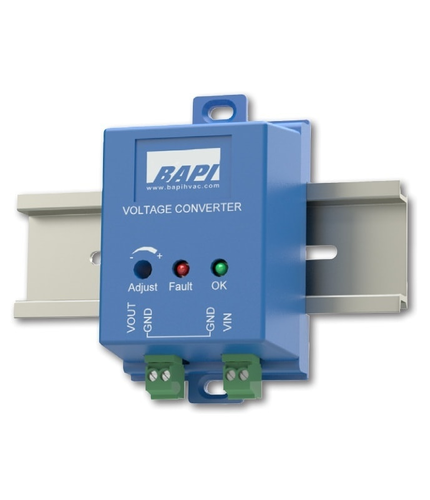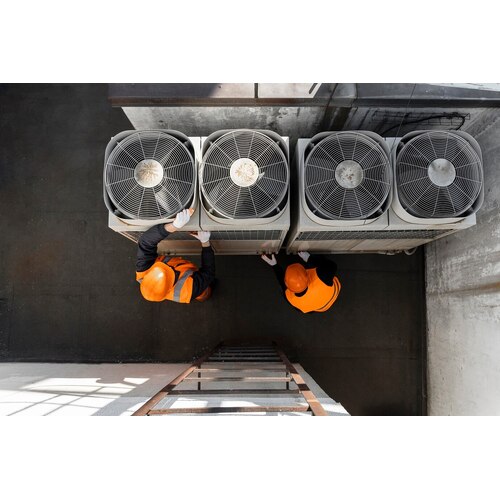What Is Remote Temperature Monitoring? A Beginner’s Guide

Remote temperature monitoring is the use of wireless temperature sensors and advanced systems to monitor and track temperature in real-time. These systems are vital in temperature-sensitive environments, such as industrial facilities, healthcare, and logistics. They improve operational efficiency by ensuring temperatures remain within preset thresholds, protecting equipment, stock, and ensuring regulatory compliance.
To explore advanced remote monitoring solutions, you can visit Controls Traders, a trusted resource for tailored monitoring systems. By integrating temperature sensors with modern technology like IoT, businesses can easily start monitoring environments, receiving real-time alerts when temperatures rise beyond safe levels.
How Remote Temperature Monitoring Works
The process of remote temperature monitoring involves several components working together:
- Temperature Sensors: Devices that measure temperature and sometimes humidity, ensuring accuracy across a wide range. For example, wireless temperature sensors are used in server rooms and industrial setups.
- Data Transmission: Systems use Wi-Fi, cellular networks, or wireless technology to send data to centralised monitoring software.
- Monitoring Systems: Platforms analyse temperatures in real-time, trigger alarms, and send alerts when conditions deviate from preset thresholds.
By using wireless temperature monitoring systems, industries can efficiently monitor temperature-sensitive environments like storage units, production facilities, and server rooms.
Benefits of Remote Temperature Monitoring
Enhanced Safety
Remote temperature monitoring systems help maintain safe operating conditions by ensuring temperatures don’t exceed critical levels, protecting equipment and devices in various applications.
Cost Savings
These systems help save energy by optimising cooling or heating systems and preventing expensive equipment failures in temperature-sensitive environments.
Operational Efficiency
Through real-time alerts, businesses can quickly respond to anomalies, preventing downtime and ensuring compliance with industry regulations.
Versatility
With temperature monitors, industries can manage a wide range of applications, from protecting stock in logistics to maintaining optimal conditions in server rooms.
Use Cases in Industrial Settings
Manufacturing
Wireless temperature sensors ensure precise temperature control during manufacturing. For example:
- Industrial models protect materials in processes like plastic moulding or food production.
- Monitoring systems help maintain environmental stability in complex setups.
Logistics
In temperature-sensitive environments, temperature monitors and alarms protect perishables in transit. Real-time alerts signal if temperatures rise, safeguarding valuable shipments.
Healthcare
Hospitals use temperature sensors to monitor vaccine storage, ensuring compliance with regulatory requirements. Maintaining the right humidity and temperature range in critical areas prevents damage to sensitive equipment.

Key Features to Look For
When choosing a remote temperature monitoring system, consider these features:
- Wireless Technology: Ensure the system uses reliable Wi-Fi or other wireless technologies for data transmission.
- Battery Life: Long-lasting battery life ensures uninterrupted monitoring in remote locations.
- Ease of Use: Systems should be plug-and-play, requiring minimal setup.
- Integration: Compatibility with existing monitoring software improves efficiency.
- Range: A good system should cover the entire operational area, from small units to large-scale industrial models.
The Future of Remote Temperature Monitoring
Emerging technology is shaping the future of remote monitoring:
- AI-Driven Systems: Enhanced monitoring software uses AI for predictive analytics, identifying trends and preventing failures.
- Edge Computing: Enables faster analysis and response by processing data locally.
- Advanced Devices: Modern wireless temperature sensors now include additional capabilities like monitoring humidity and extending battery life.
As innovations like smart sensors and IoT-enabled devices advance, remote temperature monitoring systems will become more efficient and reliable across various applications.
Conclusion
Remote temperature monitoring systems are essential for maintaining safety, optimising operational efficiency, and ensuring regulatory compliance. By using wireless temperature sensors and advanced monitoring software, industries can protect their equipment, improve conditions in temperature-sensitive environments, and save energy. For expert solutions tailored to your needs, consult Controls Traders today.
Frequently Asked Questions
What is remote temperature monitoring used for in industrial settings?
Remote monitoring systems maintain safe temperature ranges, protecting equipment and ensuring compliance in temperature-sensitive environments.
How does a wireless remote temperature monitoring system work?
It uses sensors to collect temperature data and transmits it via Wi-Fi or cellular networks to monitoring software, which issues real-time alerts.
What are the benefits of integrating remote temperature monitoring systems with IoT?
IoT integration enhances temperature monitoring through advanced analytics, predictive maintenance, and better control of industrial models.
How do I choose the right remote temperature monitoring system for my facility?
Look for features like sensor accuracy, battery life, compatibility with existing systems, and wireless technology.
Are remote temperature monitoring systems cost-effective?
Yes, they help save energy, minimise downtime, and extend the life of equipment, making them a valuable investment.
Leave a comment
Popular Posts

Voltage Converters: Learn How They Work and How to Pick the Best Type

What is a Variable Speed Drive? A Beginner’s Guide to Understanding VSDs

What is a VFD in HVAC and How Does it Work?






























